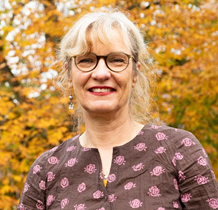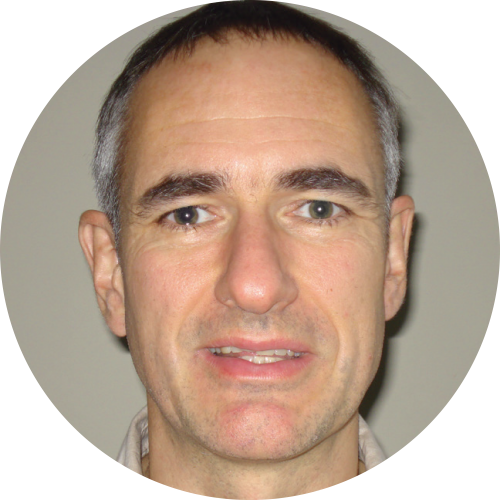Plenarvorträge
Eingeladene Vortragende und Themen:

Jon Chorover
Professor and Head, Department of Soil, Water and Environmental Science at the University of Arizona (UA)
Arizona, United States of America
Critical Zone Hydro-Biogeochemistry: Linking Structure and Dynamics
An overarching goal of critical zone (CZ) science is to unravel how contemporary climatic forcing - modulated by biological, physical, and chemical processes occurring in the landscape - gives rise to matter and energy fluxes that then drive the evolution, over much longer time scales, of CZ structure. Our team has investigated links between CZ structure and function at several water-limited sites in the southwestern U.S., including rhyolitic sites in the Jemez Mountains (NM, USA) and granite or schist sites in the Catalina Mountains (AZ, USA). Using sensor/sampler network arrays, we have documented tight couplings between seasonal variation in water/energy availability and ecosystem processes (net ecosystem exchange of water and carbon). These seasonal and event-based dynamics of land-atmosphere exchange are transmitted into the CZ and reflected in patterns of behavior in subsurface hydrology and biogeochemistry. Such behaviors, associated with the routing of water and the location or timing of chemical reactions (e.g., redox, adsorption-desorption, or mineral transformation), have been correlated with structural (geochemical and physical) patterns (obtained using a variety of methods) imprinted in the regolith across scale. For example, hillslope water and carbon flux is correlated with chemical depletion profiles at the meter scale, and element molecular speciation patterns reflect variation in reactivity at the micrometer scale, e.g., in soil aggregates or across fracture surfaces. Using a variety of tools, subsurface biogeochemical transformations, observed in real-time, are being linked to structure evolution of the CZ, with feedbacks to routing of water and weathering products. The evolution of subsurface porosity exerts control over saturation-dependent shifts in hydrologic flow paths and associated geochemical reactions at the catchment scale – changes that are reflected in the concentration-discharge behavior of surface water effluents.

Maria-Theresia Schafmeister
Professorin für Angewandte Geologie/Hydrogeologie an der Universität Greifswald und gewähltes Mitglied des Nationalen Begleitgremiums zur Auswahl des Endlagers für hochradioaktive Abfälle in Deutschland (NBG)
Greifswald, Germany
Das Nationale Begleitgremium Standortauswahl und die spezielle Rolle der Hydrogeologie
Die Aufgabe: Suche ein Endlager, in dem 27000 m3 bzw. 10000 t hochradioaktiver Abfall für wenigstens 1 Mio Jahre sicher gelagert werden können. So kann man eine Aufgabe kurz zusammenfassen, mit der sich eine Vielzahl von wissenschaftlichen Einrichtungen, staatlichen Institutionen, sowie Interessenvertreter seit Inkrafttreten des Standortauswahlgesetzes (StandAG) 2013 beschäftigen. Das pluralistisch zusammengesetzte Nationale Begleitgremium (NBG), übernimmt in diesem Auswahlverfahren die Rolle des Vermittlers zwischen den aktiv suchenden Einrichtungen und der Öffentlichkeit sowie dem Bundestag. Darüber hinaus wacht das NBG über Bereitstellung von geologischen Daten im Sinne des Geologiedatengesetzes (GeolDG). Etwa 10 Jahre vor dem vorgesehenen Ende der Standortauswahl im Jahre 2031 wurden bislang Teilgebiete in Deutschland ausgewiesen, in denen eines der möglichen Wirtsgesteine, die gewissen Mindestanforderungen entsprechen, vorkommt. In der Liste der zu beurteilenden geologischen Abwägungskriterien befassen sich einige wenige mit hydrogeologischen Faktoren wie Gebirgsdurchlässigkeiten und Rückhaltevermögen von Wirtsgesteinen und Deckgebirge oder der hydrochemischen Qualität der Tiefengrundwässer. Im weiteren Verlauf des Verfahrens wird der bisher eher statische Ansatz der Zustandsbeschreibung in Richtung dynamischer Prozessmodellierungen gehen müssen. Hierbei werden die relevanten Eigenschaften von Wirtsgesteinen und künstlichen Barrieren mit Hilfe von Modellberechnungen des Radionuklidtransports quantifiziert werden müssen. Die besondere Herausforderung in Deutschland liegt darin, dass gleichzeitig Studien zu in hydrogeologischer Sicht so unterschiedlichen Gesteinen angefertigt werden müssen. In dieser Herausforderung kann aber auch eine Chance für die hydrogeologische Forschungslandschaft in Deutschland gesehen werden. Das NBG wird sich auch dann der Aufgabe stellen, die komplexen hydrogeologischen Prozesse für jedermann transparent zu vermitteln.

Ulrich Mayer
Professor of Hydrogeology at the University of British Columbia, Department of Earth, Ocean and Atmospheric Sciences
Vancouver, Canada
On the role of reactive and inert gases in groundwater contamination studies
Groundwater contamination remains one of the key threats to groundwater resources and an improved understanding of processes controlling contaminant release, attenuation and longevity is needed. In many situations, gases play an important role in affecting groundwater contamination, through processes occurring below the water table, but also in the vadose zone. Gas compositional changes can contribute to the deterioration of water quality through the ingress or production of gases, but gas compositional variations can also be utilized to improve the understanding of contaminant fate and transport processes. For example, at hydrocarbon spill sites, light non-aqueous phase liquids (LNAPLs) often pool on the water table in shallow unconfined aquifers. At these sites, biodegradation of the hydrocarbon contaminants tend to consume O2, while generating gases including CO2 and CH4. If gas production is extensive, gas exsolution can occur, leading to the formation of entrapped free phase gas, and possibly ebullition from the saturated groundwater zone into the vadose zone. Additional transport and reaction processes occur in the vadose zone, where gases released from below the water table mix with ingressing oxygen from the ground surface. Processes occurring in the subsurface can lead to gas emissions at the ground surface and gas exchange with the atmosphere. In this context, inert gases, in particular noble gases, can be of great value to help identify biodegradation and transport regimes, since they provide sensitive tracers for phase partitioning and transport processes. This presentation will provide a conceptual overview on the role of both reactive and inert gases in groundwater contamination based on selected case studies including biodegradation of organic contaminants, sulfide mineral oxidation in mine waste, and gas migration near oil and gas production wells. In this context, laboratory experiments and multicomponent reactive transport modeling are employed in tandem to complement field observations. Together, the results highlight the relevance of reactive and inert gases for a wide range of environmental problems affecting water quality.

